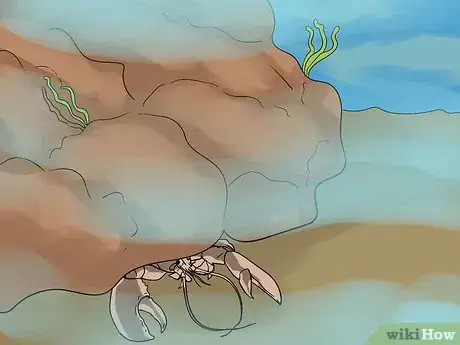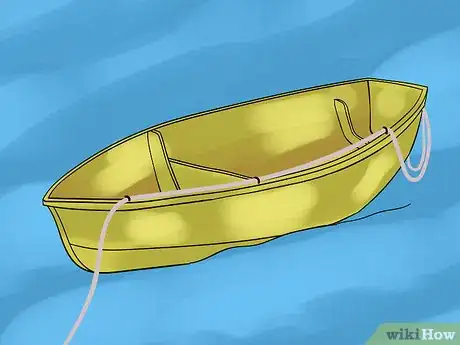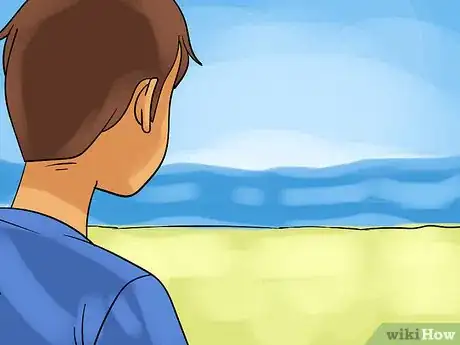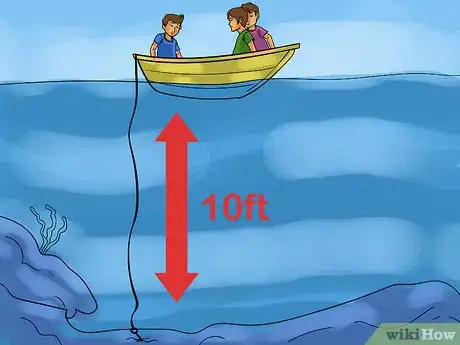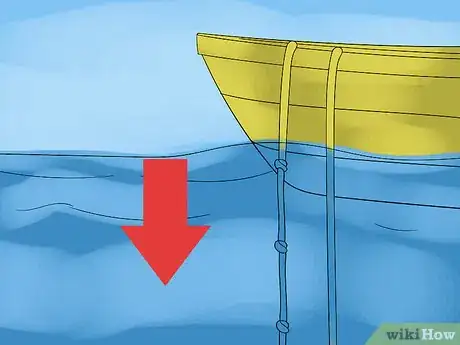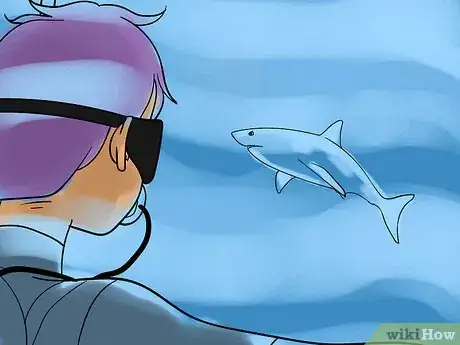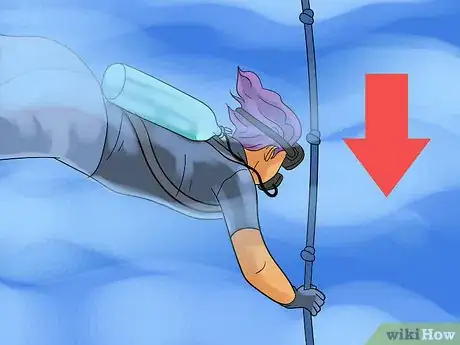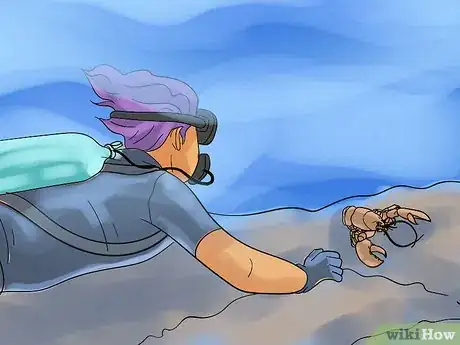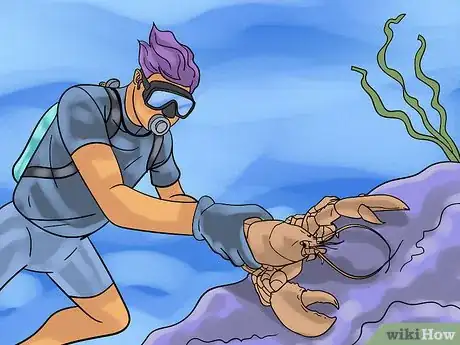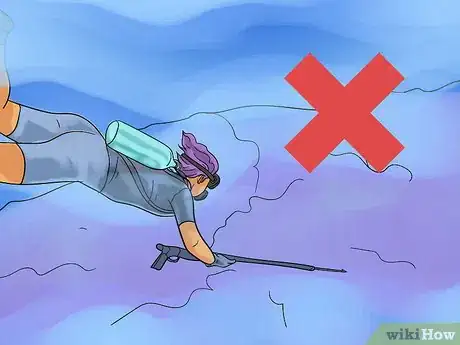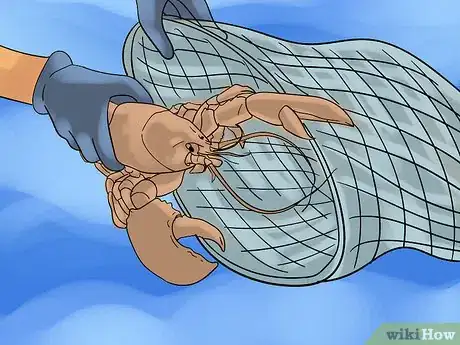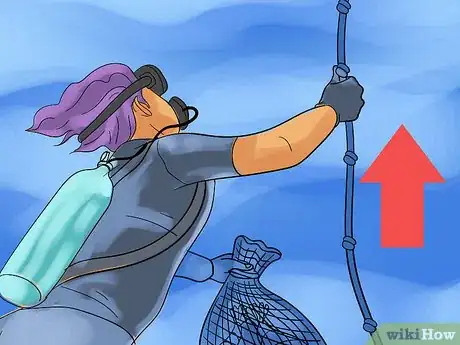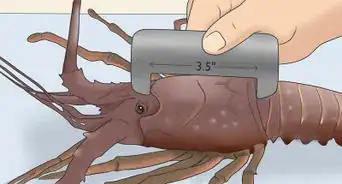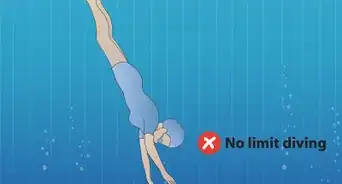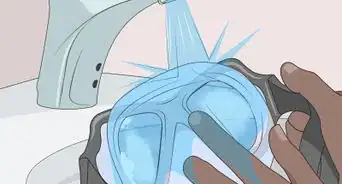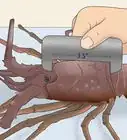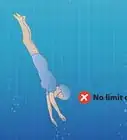X
wikiHow is a “wiki,” similar to Wikipedia, which means that many of our articles are co-written by multiple authors. To create this article, 11 people, some anonymous, worked to edit and improve it over time.
This article has been viewed 59,212 times.
Learn more...
Prepare for a grand adventure to free dive for lobster in the deep blue. Bouillabaisse made with garden vegetables and a freshly caught lobster is very flavorful. Shuck that notion that this is a venture for experts, lobsters are kind of slow and actually easy to catch (overfishing is more of a problem). This is not a commercial undertaking, so be safe, be prepared and have some thrill-seeker's fun.
Steps
-
1Find a lobster "hole". Ask your friends, the local spearfishing shop worker, read a local book or magazine, and find an area that has reefs that "look alive". A reef that looks alive is teeming with life and has healthy coral. Except for slipper lobsters, lobsters will not be found in sandy areas.
-
2Mobilize two others for this endeavor. Use a boat; a dinghy will do for calm to moderate conditions.Advertisement
-
3Go out in mid-morning, fully rested, and on a bright sunny day. Avoid the dusk, night and dawn hours. For subsistence fare, the day hours are clearly sufficient.
-
4Anchor the boat. Lobsters can be found in waters from ten feet deep and deeper. Most people should not go deeper than 30 feet (9.1 m).
-
5Throw an additional rope in the water. This rope is for the divers to get a sense of bearing and should be knotted at intervals to signify depth.
-
6Inform the lookout of your plans and have him or her monitor the water for sharks and excessive dive times. Discuss your working depths, cinch on your weight belts and slip calmly into the abyss. Strive to relax to keep from hyperventilating, and soon you will recall the cold and darkness of the deep.
-
7Descend slowly and check the depth from the knots on the rope.
-
8Search the reefs with repeated dives and you will find the lobster - an unsuspecting prey. Going past 10 feet (3.0 m) in depth, it gets dark, even in the day carry a small flashlight at the very least. Be careful how you use the flashlight to avoid vision problems. After a while your vision will adjust to the darkness of the depths.
-
9Grab lobsters from the top and back. Often, they will be partially in a hole, so beware of the vicious moray eels. The eel and the lobster strangely coexist. The three-pronged spear serves a second purpose: coax the lobster into the open with it, so the lobster can be grabbed. Grab the lobster from the back and the top, and away from the moray eel (the spiny lobster has no claws to hurt you). As you begin to understand that the lobsters swim backwards in quick bursts, (using their powerful tail), you will be able to determine where and when to grab them. If you think a lobster will dart as soon as you reach, aim a few inches behind the lobster.
-
10Avoid spearing lobsters. A speared lobster will bring the sharks, they like lobsters. A lobster that is not speared tastes better and lives longer.
-
11Put the lobster in a mesh bag and ascend slowly. Rest in the boat if necessary if tired from the compression.
-
12Take just what you need, be thankful and return to shore.
Advertisement
Warnings
- Do NOT dive near lobster traps, this is a good way to get shot.⧼thumbs_response⧽
- This is not an all inclusive set of precautions to take. Talk to people and read to learn all you can. Be an all around waterman. Be prepared for all possible dangers.⧼thumbs_response⧽
- Check local laws. In some areas even free diving will already be considered poaching and can come with a hefty fine.⧼thumbs_response⧽
- New England lobsters do have claws, take care to avoid these or the sharks may smell your blood in the water.⧼thumbs_response⧽
- Don't try to nab anything on your first ever dive if you've never done this before. Take a few practice runs to acclimatize yourself to the activity. The simple act of free diving 30 feet (9.1 m) can be dangerous in and of itself without trying to chase down a lobster. (at 33 feet you are at 2 atmospheres, and the air in your lungs will be HALF the size it is at the surface.)⧼thumbs_response⧽
Advertisement
References
- This article is a narrative from Dennis Irie, who allowed this to be posted on wikiHow.
About This Article
Advertisement
